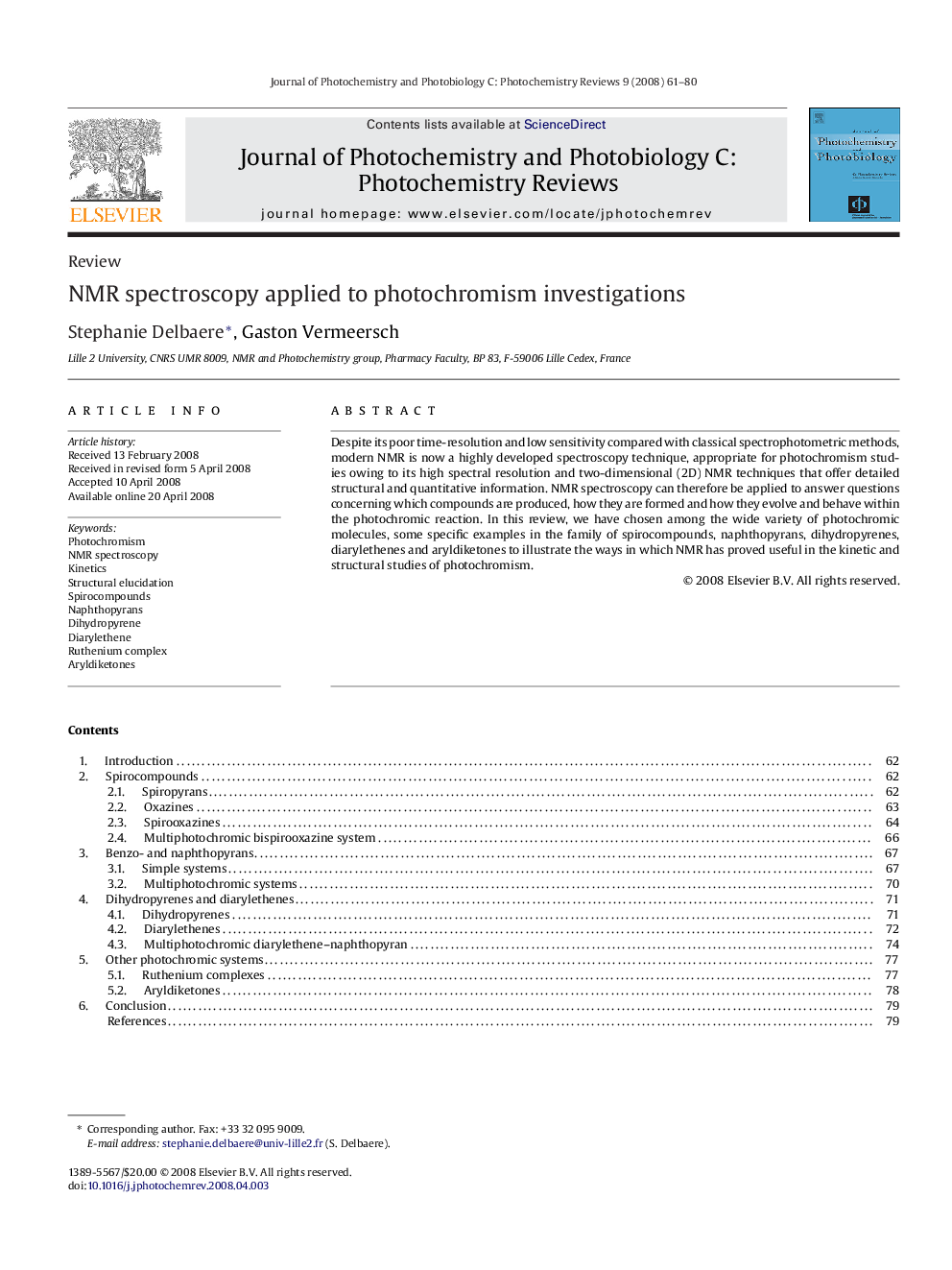| Article ID | Journal | Published Year | Pages | File Type |
|---|---|---|---|---|
| 31427 | Journal of Photochemistry and Photobiology C: Photochemistry Reviews | 2008 | 20 Pages |
Despite its poor time-resolution and low sensitivity compared with classical spectrophotometric methods, modern NMR is now a highly developed spectroscopy technique, appropriate for photochromism studies owing to its high spectral resolution and two-dimensional (2D) NMR techniques that offer detailed structural and quantitative information. NMR spectroscopy can therefore be applied to answer questions concerning which compounds are produced, how they are formed and how they evolve and behave within the photochromic reaction. In this review, we have chosen among the wide variety of photochromic molecules, some specific examples in the family of spirocompounds, naphthopyrans, dihydropyrenes, diarylethenes and aryldiketones to illustrate the ways in which NMR has proved useful in the kinetic and structural studies of photochromism.
